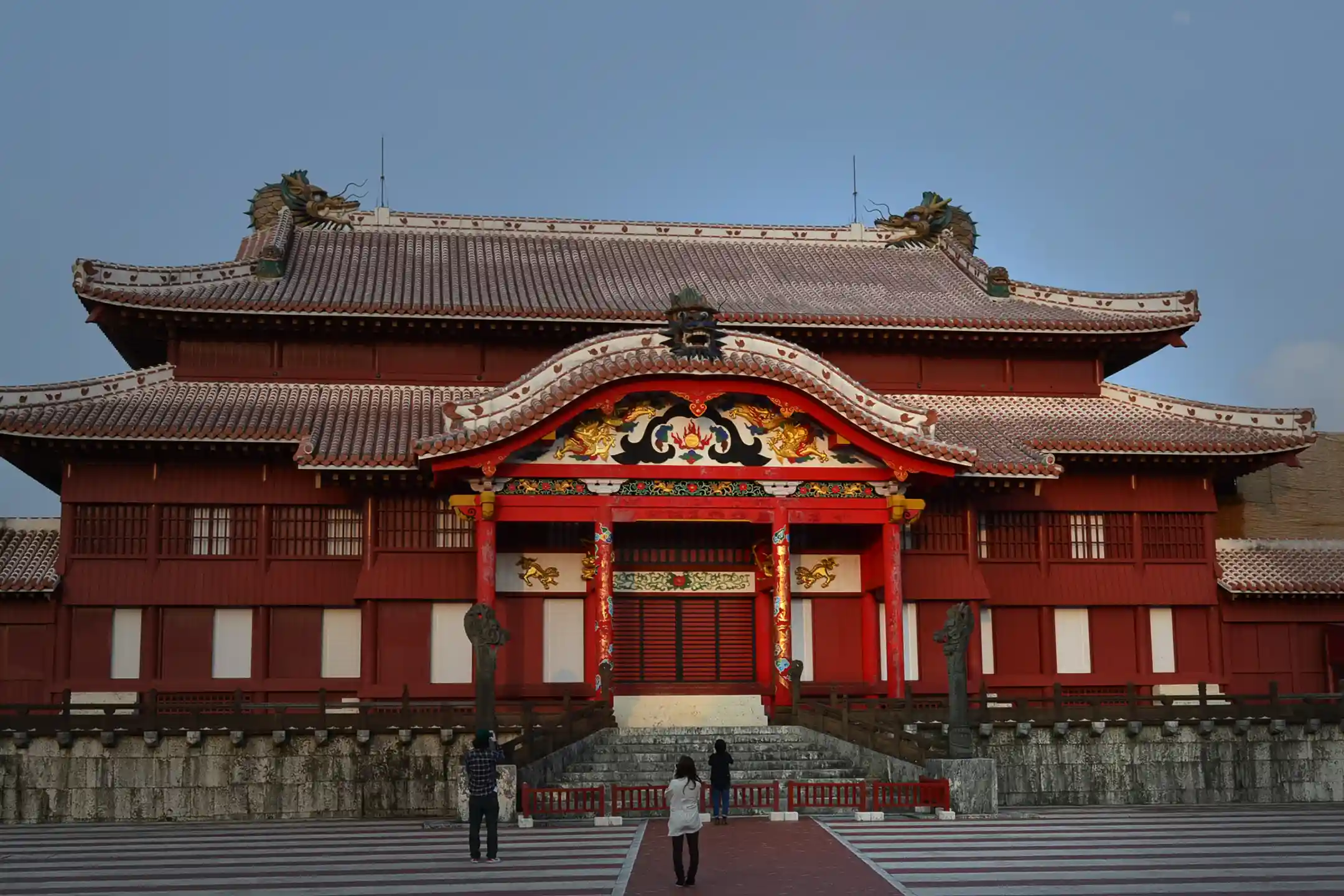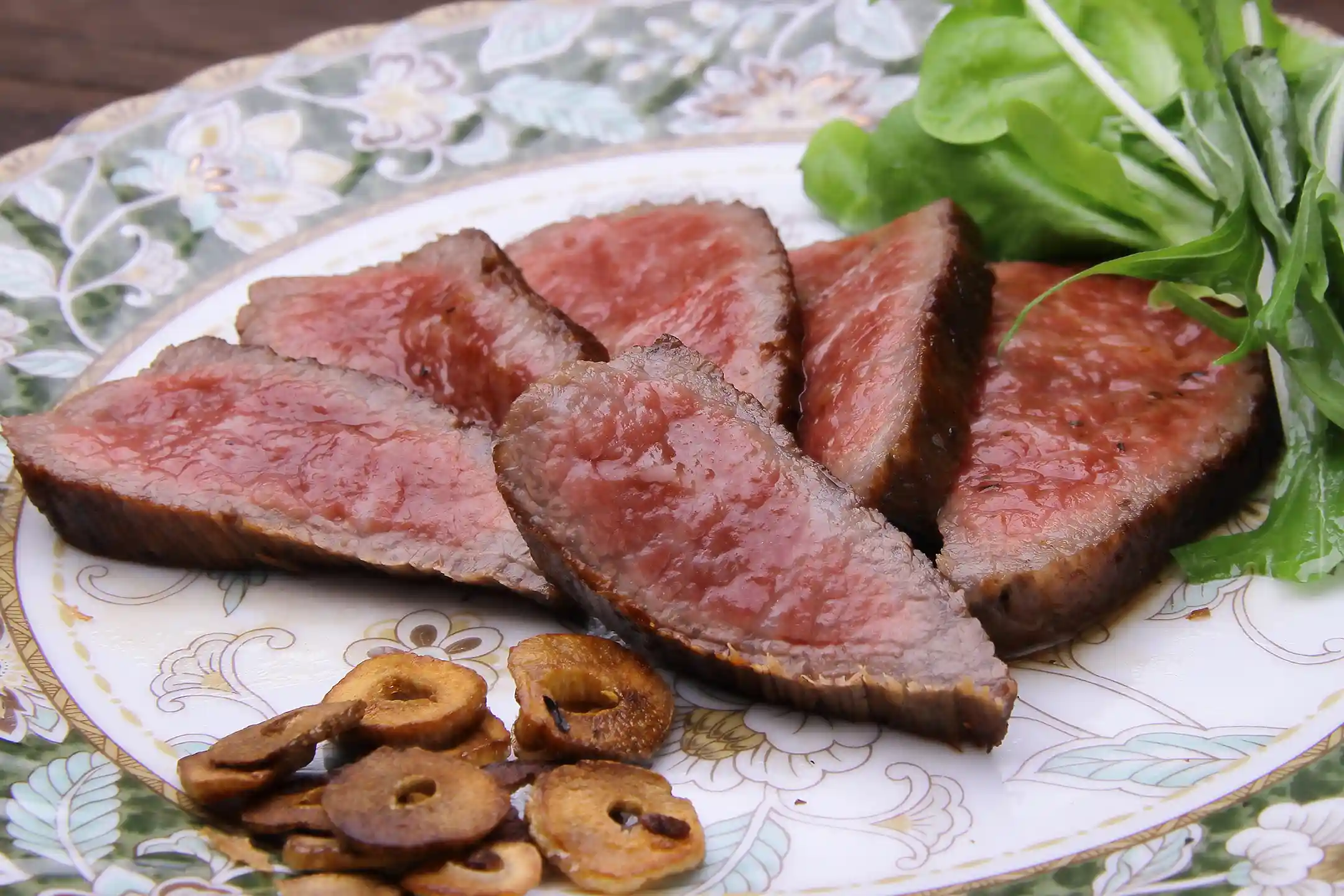Okinawa has become well known for its welcoming, everyday meals—like rafute (braised pork belly), goya champuru (bitter melon stir-fry), and Okinawa soba. Perhaps you’ve already tried a few of these classics, or you’re planning your first taste. Either way, what might surprise you is how each dish stands on a vibrant mix of influences—Okinawa’s history as the independent Ryukyu Kingdom, its ocean-blessed subtropical environment, and centuries of culinary exchanges with China, mainland Japan, Southeast Asia, and beyond.
In this article, you’ll dive into the foundations of Okinawa food: exploring key local ingredients, hallmark cooking styles, and the best places to savor them. By discovering the stories and care woven into each dish, you’ll also see how learning about cultural differences between Japan and the West can add new depth to your appreciation of Okinawa’s dining heritage.
What Makes Okinawa Food Unique?
The History of the Ryukyu Kingdom and the Formation of Its Food Culture
 You can’t fully grasp Okinawan cuisine without looking at its roots in the Ryukyu Kingdom, an independent realm from the 15th to 19th centuries. Thanks to lively trade with China, Korea, Southeast Asia, and Japan, Okinawans incorporated many imported crops and recipes into a one-of-a-kind culinary tradition. Sweet potatoes came from China’s coastal areas; bitter melon (goya) has ties to Southeast Asia; and papaya—originally from tropical America—likely arrived via Southeast Asia. The subtropical climate of these islands helped these “foreign” foods blend seamlessly with local know-how, shaping what we recognize today as Okinawan food (*1).
You can’t fully grasp Okinawan cuisine without looking at its roots in the Ryukyu Kingdom, an independent realm from the 15th to 19th centuries. Thanks to lively trade with China, Korea, Southeast Asia, and Japan, Okinawans incorporated many imported crops and recipes into a one-of-a-kind culinary tradition. Sweet potatoes came from China’s coastal areas; bitter melon (goya) has ties to Southeast Asia; and papaya—originally from tropical America—likely arrived via Southeast Asia. The subtropical climate of these islands helped these “foreign” foods blend seamlessly with local know-how, shaping what we recognize today as Okinawan food (*1).
At court banquets, Chinese influences shone through, showcasing intricately presented dishes meant to impress visiting dignitaries. Everyday cooking, on the other hand, revolved around vegetables, pork, and fish—simple but satisfying meals. Even after the Ryukyu Kingdom was absorbed into Japan in 1879, these culinary customs combined with mainland Japanese techniques to keep evolving. This resilient “chanpuru spirit” of mixing diverse elements stays alive in Okinawa’s kitchens today (*2).
Because Okinawa developed a distinct identity within Japan, it also represents the “variety found among island cultures,” which can feel different from typical Western contexts. When you think about it, that’s part of why many Western visitors have dubbed Okinawa “so intriguing”—the result of a kingdom shaped by broad maritime exchange. If you look at these flavors through a culturally open-minded perspective, you’ll begin to see that Okinawa’s dishes are not just “unusual,” but rather windows into a fascinating, centuries-old story.
A Warm Climate Surrounded by the Sea

Okinawa’s subtropical climate remains mild throughout the year, making it perfect for vegetables like goya (bitter melon), island shallots, and papaya—vibrant produce brimming with vitamins and minerals. Goya retains its vitamin C even after cooking, while island shallots have a strong flavor and nutritional benefits. Because the region consists of many islands, local seas abound with seaweed, shellfish, and other marine delights. Salting or drying was vital for preserving seaweed on remote shores. This “island-based” way of life—less common in Western settings—naturally encourages a more harmonious relationship with nature and food.
For travelers from varied climates and backgrounds, that intimate connection to land and sea might be an exciting departure from the ordinary—one that sparks curiosity and fosters genuine cross-cultural understanding.
Key Ingredients in Okinawa Japan Food

The Culture of Pork and Popular Dishes (Rafute, Soki, etc.)
It’s often said in Okinawa that locals “use every part of the pig except its squeal.” This deep-rooted pork culture stems from centuries of trade under the Ryukyu Kingdom and a culinary identity distinct from mainland Japan. Pork remained a core protein in an era when much of Japan shunned meat—especially beef. Rafute, a staple dish braised with awamori (Okinawan distilled spirit), soy sauce, and brown sugar, underscores that point, while soki (pork spare ribs) is often topped on “soki soba” or served simmered in a sweet-savory sauce (*1).
You’ll also see mimiga (pig ear) and tebichi (pig’s feet), proving how Okinawans really do put the entire pig to use. This approach pairs well with contemporary sustainability values, reminding us that mindful use of resources goes far beyond any single culture. In short, when you tuck into a plate of rafute, you’re savoring a slice of Okinawa’s history of thoughtful, all-inclusive cooking practices.
Island Vegetables (Goya, Island Shallots, Fuchiba) and Their Nutrition and Taste

Bitter melon, or goya, might be the best-known vegetable from Okinawa, but you’ll also find island shallots and fuchiba (mugwort) in everyday dishes—each thriving in subtropical weather. You’ll taste everything from the zippy bitterness of goya to the sharp tang of island shallots and the herbaceous flair of fuchiba. If you’re more accustomed to Western produce, you may find these flavors excitingly new.
Of course, how “bitter” or “aromatic” something seems can vary by cultural background. You might find goya challenging at first, but learning about how farmers cultivate it—or how local cooks balance the flavor—can transform that initial reaction into a fresh sense of respect.
Sea Grapes, Mozuku, and Other Abundant Marine Products
Okinawa’s sea teems with edible seaweeds, notably mozuku and umibudō (sea grapes). Umibudō is prized for its crisp, pop-in-your-mouth texture, while mozuku is rich in fucoidan (*2). The region’s waters also yield a variety of fish, shellfish, and even sea snake—used in traditional soups like irabu-jiru. Such dishes can push the boundaries of what’s considered “normal” in many Western diets, but that sense of adventure often opens up meaningful cultural conversations. Tasting new seaweed or shellfish varieties might be your gateway to experiencing a side of life you can’t find anywhere else.

Must-Try Dishes in Okinawa
For anyone visiting the islands, certain dishes really can’t be missed. Although they might look fairly simple at first glance, each has a compelling backstory. Here’s a look at Okinawa soba, goya champuru, and taco rice—three favorites that highlight how you can glimpse Ryukyuan culture through local food.
Okinawa Soba | Thick Noodles in a Pork-Based Broth

Despite its name, “Okinawa soba” uses wheat flour instead of buckwheat, making it distinct from typical Japanese soba. The mild broth blends pork essence with bonito stock for a comforting, balanced taste, often garnished with pork belly (sanmai-niku), soki (spare ribs), pickled ginger, and sometimes koregusu (chili-infused awamori) for added heat.
These noodles likely evolved from Chinese imports introduced during the Ryukyu era, then took root in everyday life post-Meiji. Even after World War II, the dish thrived, backed by strong local support. Interestingly, the name “Okinawa soba” faced legal challenges for not using buckwheat, but the local community won the right to keep it (*1). From a cross-cultural angle, it’s a fascinating story of a region with a history of outside rule preserving its culinary identity.
While many Western travelers find the concept of combining pork and fish-based broth unusual, they often discover it’s comfortingly hearty once they taste it. Each shop tends to tweak the soup and toppings, so you might have fun searching around for your personal favorite (*2).
Goya Champuru | Stir-Fried Bitter Melon and Tofu
Goya champuru is the poster child for homestyle Okinawan cooking, featuring goya (bitter melon), island tofu, eggs, and pork all tossed together. Its crisp, mild bitterness combined with fluffy egg and savory pork forms a flavor profile that’s refreshingly different. After WWII, Spam—a product introduced by American forces—also became a popular ingredient, embodying the region’s inclusive “chanpuru spirit” (*3).
At times, travelers have labeled this dish “exotic,” but truly it’s the product of open culinary exchange. Rather than overshadowing older traditions, the addition of Western ingredients actually broadened local possibilities (*4). Goya champuru is also nutritious, and people outside Okinawa have increasingly embraced it—so tasting it in its home setting is a sure way to see its local significance.
Taco Rice | Taco-Flavored Meat on Rice

Taco rice is a perfect example of creative adaptation: it’s taco-seasoned ground meat, lettuce, cheese, and tomato served over white rice, then drizzled with salsa. Legend says it was invented near a U.S. base in the 1980s, blending an American craving for tacos with Okinawa’s love of rice. Crispy lettuce and cheese meld beautifully with the spicy beef and soft rice, making it a top pick for a quick meal after the beach.
What started as a somewhat quirky dish soared in popularity, helped by American service members and local fans. Taco rice underscores Okinawa’s modern history—shaped by the presence of U.S. forces and the island’s readiness to adapt outside flavors (*5). Today, it pops up in school lunches, convenience stores, and even fast-food menus, reflecting how global influences have taken root in day-to-day life.
Where to Experience Authentic Okinawan Cuisine
Trying classic Okinawan recipes on their home turf goes far beyond simply eating. From local markets and casual diners to elegant restaurants and regal palace-inspired menus, you’ll sense how “food” and “culture” are deeply entwined. Here are a few places to fully immerse yourself in Okinawa Japan food—including tips on where English-friendly service is provided—for anything from a laid-back outing to a more refined adventure.
Daiichi Makishi Public Market (Naha City)
Nestled close to Kokusai Street in central Naha, Daiichi Makishi Public Market opened in 1951, evolving into the city’s “kitchen.” Although it was renovated and reopened in 2023 with a fresh new look, the energetic bustle of vendors and kaleidoscopic food selection remain. The first floor brims with fish, meat, and vegetables that might leave you thinking, “I’ve never seen anything like this before!”
Head upstairs to find seating areas where you can have items prepared right after you buy them on the ground floor. This unique mochiage system—“buy downstairs, eat upstairs”—is quite fun for Western visitors, who often appreciate the direct, lively interaction with vendors. The market, on the edge of famous Kokusai Street, is an excellent spot to soak up local color, with many stall owners comfortable offering pointers in English or via friendly gestures.
Local Diners & Izakayas
For a more down-to-earth taste of the islands, visit the small diners or izakayas (casual bars) frequented by Okinawans themselves. Picture a no-frills atmosphere, warm conversation, and simple but flavorful dishes like Okinawa soba or champuru. In the evenings, awamori (Okinawan liquor) flows alongside rafute, mimiga, or jīmamī-dōfu (peanut tofu). Some spots even have live sanshin shows that can get everyone dancing in a joyous swirl of local culture. Even if your Japanese is limited, an open mind and genuine curiosity about each other’s backgrounds can forge memorable connections.
High-End Dining & Ryukyuan Cuisine Restaurants
If you’re celebrating a special occasion or just craving something more elegant, you’ll find higher-end restaurants that serve both historical palace-inspired feasts and contemporary refinements of older dishes. Often, the interiors glow with bold bingata textiles, while the gentle sounds of sanshin add atmosphere. The meal itself might show Chinese influences, reflecting the maritime trade that enriched the Ryukyu Kingdom. Hearing from the chef about the cultural tale behind each plate can be a deeply meaningful encounter.
Cooking Classes and Food Workshops
For an interactive approach, try one of the region’s cooking classes—some taught in English—where you’ll buy fresh produce and then prepare goya champuru or Okinawa soba from scratch. This experience goes beyond mere demonstration; you’ll swap ideas and stories with classmates from around the world, underscoring the “intersectionality” that food fosters. By the end, you’ll not only have cooked a delicious meal but gained insight into the local ethos of community-based living.
Cultural Activities to Deepen Your Okinawa Food Journey
Ryukyuan Dance and Sanshin Performances & Tours
If you want to go deeper, consider exploring Okinawa’s time-honored performing arts, like Ryukyuan dance and the sanshin. National Theatre Okinawa offers regular performances with earphone commentary for non-Japanese speakers (*1). The swirling colors and melodic rhythms can evoke the elegance of the old Ryukyu court—which profoundly shaped the local diet.
Another option is to attend a sanshin mini-workshop, so you can try strumming a few chords yourself. You might notice how the soft timbre of this three-stringed instrument harmonizes with the warmth of Okinawa’s home-style recipes. Many izakayas also feature live music or dance while serving local dishes, giving you an energetic peek into how culture and food remain intertwined.
Museums with Expert Guides and Specialized Tours
Discovering Okinawa’s centuries of history—from its days as the Ryukyu Kingdom to the trials of WWII—can enrich your overall culinary perspective. The Okinawa Prefectural Museum & Art Museum in Naha, for instance, covers the region’s dynamic overseas trade as well as the island’s environment and folk traditions, with multilingual guides available (*2). Seeing how outside ingredients and ideas shaped local recipes reveals Okinawa’s longtime role as a cross-cultural bridge.
At locations such as the Himeyuri Peace Museum in Itoman, you might learn about wartime shortages that forced families to rely on every scrap of produce and every part of the pig. Realizing how these crises influenced the comfort foods you find today can add even more depth to each bite.
Sustainable and Sophisticated Ways to Enjoy Okinawan Cuisine
Restaurants and Hotels Committed to Local Sourcing and Reducing Plastic Waste
Okinawans are increasingly spotlighting sustainability: from using local produce to lowering plastic consumption. Through initiatives like “Okinawa Shokuzai no Mise” (Okinawa Ingredient) certification, shops and eateries that source a set percentage of local ingredients earn special recognition (*1). Many property owners highlight their partnerships with local farmers and fishermen. Meanwhile, hotels and resorts focus on cutting food waste or single-use plastics, aiming to harmonize environmental stewardship with the joys of high-quality eating.
This approach resonates with the fair-trade and organic movements common in Western countries, but adapted to Okinawa’s unique environment. On outlying islands, for example, some eco-resorts celebrate local harvests, carefully manage waste, and protect local ecosystems—letting you embrace comfort while traveling responsibly.
Indulging in Special Moments at Luxury Resorts
Okinawa’s high-end resorts often reinterpret local cuisine, drawing on established traditions and island-grown ingredients. At Halekulani Okinawa in Onna Village, for instance, “SHIROUX” pairs top-tier Tokyo talent with local produce (*2). At HOSHINOYA Okinawa in Yomitan Village, you might savor multi-course menus built on fresh picks from the region (3).
Expect more than just great-tasting meals—these places also choose tableware thoughtfully, often showcasing Ryukyuan lacquerware or pottery, and explaining the artistry behind it. Think of the dining room as a cultural stage, not just a fancy venue. By appreciating local craftsmanship and the area’s historical experiences, you add extra richness to your gastronomic adventure.
Conclusion: Embrace Okinawa Japan Food for a Deeper Travel Experience
Okinawan cuisine is much more than a collection of popular dishes—it’s a living cultural tapestry shaped by the Ryukyu Kingdom’s far-reaching maritime ties, the scars of war and rebuilding, and waves of outside influence. Whether it’s fully utilizing each part of a pig, treasuring the bitter tang of goya, or preserving seaweed and shellfish traditions, Okinawa’s distinctive identity stands apart from both mainland Japan and typical Western dining.
Today, Okinawa food ranges from casual diners and environmental-minded cafés to top-notch gourmet spots. And once you connect each dish with the land and sea, or with the resourcefulness and artistry behind it, you’ll see how each bite becomes a window onto history and heritage.
So next time you tuck into your meal in Okinawa, take a pause to appreciate the myriad cultural layers, personal values, and unwavering love poured into every plate. If you find yourself questioning “Why does it taste this way?” or strike up a conversation with a local cook, you’re already taking steps toward the cross-cultural dialogue that makes travel truly memorable. By approaching each meal with curiosity and respect, you’ll transform an enjoyable dish into an enriching cultural adventure—one that resonates well beyond “This is so tasty!” and into the realms of “I never knew that!” Let Okinawa’s blend of flavors, history, and community invite you into a more profound sense of discovery.
Author Bio





.webp)
.webp)